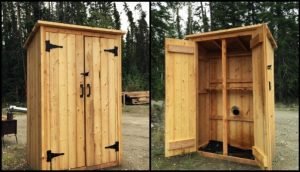Older homes often carry hidden risks behind their charm. Layers of old paint, especially in trims, windows, and doors, can contain lead. Renovation work like sanding or scraping disturbs these layers and spreads fine dust that’s easy to breathe in or accidentally ingest. Exposure to lead paint is especially dangerous for young children and pregnant women. Before you start any updates, it’s worth knowing how to test safely and when to call in expert help.
Contents
Understanding Lead in Legacy Paint Layers
Lead was once prized in paint for its durability, vibrant color, and quick drying time. Because of this, it was widely used in homes built before the late 1970s. You’ll often find it buried under newer layers on window sashes, door frames, baseboards, trim, stair rails, and even porch posts.
Each repaint sealed the older layers beneath. Over time, these coatings built up into a thick shell that may look fine on the surface. But the risk begins the moment you sand, scrape, drill, or apply heat.
Lead becomes most hazardous in the form of dust. Friction areas, like sliding windows or sticky doors, grind microscopic particles into the air and onto floors. Sun damage and moisture can also crack the topcoat, exposing and releasing the brittle lead-rich paint underneath.
Even old furniture, built-in cabinets, or antique cribs brought in from older homes may carry the same hidden threat. If paint is peeling, chalky, or chipped, especially in places touched often by kids or pets, test those areas immediately.
The good news is that not every lead-painted surface needs removal. If the paint is intact and undisturbed, it’s often safer to manage it in place. Testing helps you decide where containment or removal is needed, and where you can proceed with caution.
How to Check Your Home for Lead
Before you pick up a sander or pry bar, it’s essential to know if your home contains lead-based paint. Testing first helps prevent accidental exposure to lead paint, especially in high-risk areas like window frames, door trim, and baseboards. Here’s how to approach testing with confidence.
Look for Clues in Your Home’s Age
If your home was built before 1978, assume lead paint is a possibility until proven otherwise. Homes from the 1940s to 1960s are especially high-risk. Focus on original trim, doors, windows, and decorative molding. Even if surfaces were repainted, the older layers underneath may still contain lead. Age alone doesn’t confirm exposure to lead paint, but it strongly raises the odds.

Use Lead Test Swabs Carefully
Lead test swabs offer a quick first look, especially for small DIY jobs. Rub the swab on painted surfaces and observe for a color change, typically, a pink or red result indicates a positive test. Be cautious though. These tests may not detect lead on glossy, dark, or layered paint. Always test in several spots and follow up with lab confirmation if you’re unsure.
Send Paint Chips to a Lab
Chip testing gives a more accurate picture than swabs. Use a utility knife to safely remove a small painted sample and send it to a certified lab. You’ll get a clear lead level in parts per million. This is one of the most reliable ways to confirm exposure to lead paint before you start sanding or demo work that might release toxic dust.
Hire a Certified Lead Inspector
For whole-house certainty or before large renovations, bring in a certified lead inspector. They use XRF analyzers to detect lead through layers of paint without damaging the surface. Results are instant and professional-grade. This method is best when you need room-by-room data and want to avoid guessing. It’s a smart move when young children or pregnant family members live in the home.
Start with High-Risk Areas
Some spots are more likely to release lead dust than others. Focus on windows that slide, doors that stick, baseboards, and any place with flaking paint. These high-friction or moisture-prone areas create fine particles that are easy to inhale or ingest. Testing these first helps prevent accidental exposure to lead paint and gives you a clear plan for safe renovation steps.
Protecting Kids, Pets, and Gardens During Work
Lead dust doesn’t stay where you put it. During renovations, it can spread quickly through floors, hands, paws, and even garden soil if you’re not careful.
Create No-Entry Zones
Set up clear boundaries around any work area using plastic sheeting and zip walls. Kids and pets should never pass through while work is active or cleanup is incomplete.
Even a few minutes in a dusty space can result in exposure through hand-to-mouth contact or tracking particles into clean zones. Label these areas clearly and reinforce them with physical barriers, not just warnings.
Daily Cleaning Routines
Renovation dust can settle quickly and cling to surfaces throughout the home. Use wet wipes or microfiber cloths to clean high-touch areas daily, such as doorknobs, tables, light switches, and floors.
HEPA vacuums are essential for carpets and upholstery. Always clean from top to bottom to prevent recontamination. Small daily efforts reduce the chance of accidental lead dust exposure for both children and pets.
Relocate Toys, Pet Bowls, and Play Gear
Before work starts, move all toys, pet food bowls, bedding, and garden tools far from the renovation zone. Lead dust clings to soft surfaces and is nearly impossible to remove from plush toys or fabric beds.
Store items in sealed bins during the project. Once work is finished and clearance tested, clean them thoroughly before returning them to common spaces.
Contain Outdoor Work Carefully
If you’re sanding, scraping, or repainting exteriors, protect nearby soil and plants. Lay plastic sheeting under the work zone and secure it with boards or bricks. Remove any container gardens, playsets, or raised beds downwind of the area.
After work ends, roll up the sheeting carefully to prevent spreading dust. Unchecked, exterior projects can easily contaminate garden soil where lead may linger for years.
Health Symptoms and When to Talk to a Doctor Online
Lead exposure doesn’t always cause obvious symptoms right away. Small amounts can build up over time, especially in children, and cause serious health effects before anyone notices.
Watch for Subtle Signs in Children
Children may not show obvious signs of lead exposure right away. Symptoms can be subtle, so early detection is key, especially after home renovations.
- Fatigue or low energy that doesn’t improve with rest
- Irritability or sudden behavior changes
- Frequent stomachaches or constipation
- Trouble concentrating or delayed learning
- Loss of appetite or slowed growth
If your child has been near chipping paint or dusty renovation areas, talk to a doctor online to see if testing is needed.

Know What to Look for in Adults
Adults may overlook early signs of lead exposure, mistaking them for everyday stress or aging. Pay attention to any new symptoms that appear after the renovation work is complete.
- Persistent headaches that don’t respond to usual remedies
- Joint or muscle aches without clear cause
- Memory lapses or trouble concentrating
- Unexplained high blood pressure
- Mood changes or sleep disturbances
If these symptoms appear after sanding or demo work, consult a doctor online to assess your risk and discuss testing or treatment options.
When Exposure Seems Likely
If you’ve had direct contact with chipping lead paint or worked in an unsealed area without protection, it’s best not to wait for symptoms. Lead doesn’t leave the body quickly and may continue to cause damage long after exposure.
In case of exposures to lead paint, Ask a question and get an answer from a verified expert doctor on Ask A Doctor, the leading expert question and answer website featuring doctors. Fast guidance can help protect you and your household, especially if children or pregnant women live in the home.
Conclusion
Exposure to lead paint is a serious concern, especially in older homes where renovations can stir up toxic dust. Even small projects can put children, pets, and adults at risk if proper precautions aren’t taken. Testing your home and using containment methods can significantly reduce that risk. If symptoms appear or you’re unsure about your family’s safety, don’t wait. Talk to a doctor online and take the right steps to protect your health.Certain home renovations can also be hazardous. Know which of the home improvements are dangerous when done alone in this article!






